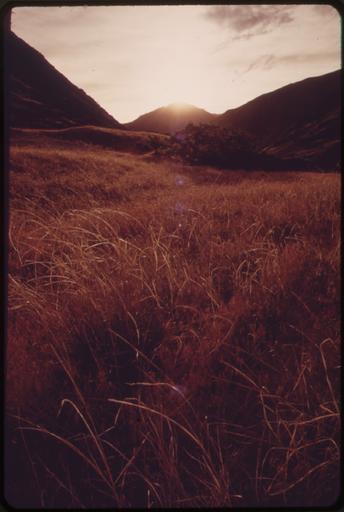Introduction
In the realm of photography, there exists a profound sub-genre known as contemplative photography. Unlike traditional photography that often focuses on technical prowess or aesthetic appeal, contemplative photography invites us to pause, reflect, and connect with our inner selves through the lens. The essence of this practice transcends mere image-making; it encompasses a holistic approach to seeing and being in the world.
Through this article, we will delve into various aspects of contemplative photography—its definitions, significance, techniques, and its relationship with other photographic styles such as fine art photography and self-portrait photography. By the end of this exploration, you'll have a robust understanding of why contemplative photography is more than just a picture.
What is Contemplative Photography?
Contemplative photography can be defined as an intentional approach to capturing images that allows for deeper reflection and awareness. Unlike conventional photography that may prioritize composition or lighting above all else, this form elevates the act of seeing itself.
The Origins of Contemplative Photography
Contemplative photography has roots in mindfulness practices and Eastern philosophies. It emphasizes being present in the moment while engaging with one's surroundings. Practitioners often describe their experiences as meditative—where each click captures not just an image but also an emotion or thought.
Why Choose Contemplative Photography?
So why should one choose contemplative photography over more traditional methods? The answer lies in its transformative potential. This style fosters self-awareness and emotional intelligence while encouraging creativity. Whether you're an amateur photographer or a seasoned professional, http://evergreennotes272.theburnward.com/creating-a-relaxing-atmosphere-with-calming-artwork adopting a contemplative approach can enhance your artistic journey.
The Intersection of Fine Art Photography and Contemplative Photography
Defining Fine Art Photography
Fine art photography is typically characterized by its intent to convey aesthetic value rather than merely document reality. While both fine art and contemplative photography share artistic goals, they diverge in execution and purpose.
How Contemplative Approaches Enrich Fine Art Photography
Integrating contemplative techniques into fine art photography can yield deeply resonant works that speak to universal human experiences. By embedding mindfulness into the creative process, photographers can cultivate images that resonate on multiple levels—visually striking yet emotionally rich.
Understanding Self-Portrait Photography Through a Contemplative Lens
The Meaning Behind Self-Portrait Photography
Self-portrait photography involves capturing one's own likeness through various means—often used as a tool for self-exploration or communication. When approached from a contemplative standpoint, self-portraits become powerful reflections of identity.
Faceless Self-Portraits: A New Narrative
Faceless self-portraits offer viewers an opportunity to engage with the photograph's emotional depth without being distracted by facial expressions or specific identities. This technique aligns well with the principles of contemplative photography by focusing on essence rather than appearance.
Techniques for Practicing Contemplative Photography
Mindfulness: The Core Principle
Mindfulness is central to practicing contemplative photography. It encourages photographers to slow down, observe their surroundings closely, and connect emotionally with what they see.
5 Mindfulness Practices for Photographers
Breath Awareness: Take deep breaths before you shoot. Observation: Spend time simply observing your surroundings before reaching for your camera. Non-Judgmental Awareness: Let go of preconceived notions about what makes a good photo. Attunement to Emotions: Notice how different scenes make you feel. Reflection: After shooting, take time to reflect on what you captured.Using Natural Light as a Tool for Reflection
Natural light plays an essential role in both fine art and contemplative photography. Understanding how light interacts with subjects can deepen your visual storytelling.
Types of Natural Light
- Golden Hour: The soft light during sunrise or sunset that creates warm hues. Overcast Days: Diffused light that reduces harsh shadows. Backlighting: Creates silhouettes which evoke emotion.
Aesthetic Self-Portrait Photography Meets Contemplation
Creating Aesthetic Photos That Speak Volumes
Aesthetic self-portrait photography often focuses on visual beauty—balancing color palettes, settings, and composition harmoniously. However, when combined with contemplation, these images gain layers of meaning beyond surface beauty.
The Role of Emotion in Aesthetic Portraits
Emotional resonance transforms ordinary aesthetic photos into powerful visual narratives that connect with viewers on deeper levels—evoking feelings of nostalgia or joy through subtle cues embedded within the imagery.
Exploring Vintage Aesthetic Photography Through Contemplation
What Makes Vintage Aesthetic So Inviting?
Vintage aesthetic photography taps into nostalgia—a longing for simpler times portrayed through sepia tones or grainy textures that evoke memories from the past.


How To Infuse Contemplation Into Vintage Aesthetics?
By taking time to reflect upon what vintage aesthetics mean personally—perhaps capturing family heirlooms or cherished objects—you can create photographs imbued with emotional depth while embracing timeless beauty.

Quiet Pictures Aesthetic: Capturing Stillness Through Your Lens
The Allure of Quiet Pictures Aesthetic
Quiet pictures aesthetic embodies serenity—it captures tranquil moments where chaos subsides allowing viewers space for contemplation themselves.
Techniques for Creating Quiet Pictures
Choose minimalistic compositions. Focus on soft colors. Utilize negative space effectively. Capture still life compositions—inanimate objects telling stories quietly yet powerfully!Empowering Photography Through Reflection
Harnessing Empowerment via Your Lens
Empowering photographs inspire individuals—they evoke empowerment through representation allowing marginalized voices visibility providing platforms amplifying stories otherwise unheard!
How To Self-Portrait Photograph Your Essence?
Steps To Create Meaningful Self-Portraits
Identify emotions you wish express! Choose meaningful locations/settings. Plan outfits reflecting moods/themes! Experiment different angles/lenses capturing unique perspectives!FAQs About Understanding Contemplative Photography
1️⃣ What is contemplative photography?
Contemplative photography emphasizes being present while capturing images; it encourages reflection over mere documentation.
2️⃣ How does self-portraiture fit into this genre?
Self-portraits allow photographers explore identity deeply; when approached mindfully they reveal inner truths.
3️⃣ What tools are essential for practicing this type of craft?
Any camera will do! Focus instead on nurturing mindfulness & observation skills.
4️⃣ Can I incorporate techniques from other genres like fine art?
Absolutely! Blending styles enriches artistry fostering unique expressions.
5️⃣ Is there room for digital manipulation within contemplation?
While traditionalists may argue against it; thoughtful edits enhancing emotional impact may align perfectly!
6️⃣ How do I get started if I'm new at this?
Start small! Observe your environment daily carrying camera whenever possible allow inspiration arise naturally!
Conclusion
Understanding contemplative photography goes beyond technical skills; it nurtures creativity & connection fostering deeper understanding oneself & surroundings alike! By integrating mindfulness techniques along merging them diverse genres—from aesthetic self portraits vintage aesthetics—photographers open doors exploration uncovering narratives waiting unfold!
In conclusion—as we’ve journeyed together through rich landscapes contemplation—let’s remember every click holds potential transcend mere visuals transforming essence captured moments true significance!
This article aims not only to inform but also inspire those intrigued by the world behind their lenses; reminding everyone there’s always more than meets eye… welcome adventure awaits!